Effective Search Engine Optimization (SEO) hinges on the strategic use of keywords, which are the backbone of your content’s visibility online. Think of keywords as a critical bridge connecting your website to users who are searching for relevant information. When you place these keywords in the right spots, you significantly increase the chances of your website appearing at the top of search engine results pages (SERPs). Let’s explore twelve crucial areas on your website where SEO keywords should be integrated to maximize their impact!
Title Tags
Title tags (page titles), displayed on SERPs as clickable headlines, should include your primary keyword and be compelling enough to attract clicks. They are an essential element of on-page SEO, guiding search engines and users to the relevance of your page.
Meta Descriptions
Meta descriptions are brief summaries that appear under your page titles in search engine results. Including your primary keyword in the meta description can improve click-through rates, as users see the relevance to their search queries. Though not a direct ranking factor, well-crafted meta descriptions can influence user behavior and drive traffic to your site.
Body Content
Add your keywords naturally throughout the body of your content. Avoid keyword stuffing; it can lead to penalties from search engines. Instead, strive for a keyword density of around 1-2%, ensuring the content remains readable and valuable to your audience. For example, you can add one or two keywords for every one hundred words.
Header and Sub-header Tags
H1: Your Main Page Title
The H1 tag is among the most important places to include your primary keyword. This heading serves as the page title, giving search engines a strong signal about the main topic of your content. Make sure it is descriptive and includes your main keyword naturally.
Sub-headers: H2s and Beyond
Subheadings can include one or more H2 tags or H3s, H4s, H5s, and H6s. They help break down your content into readable sections and provide additional opportunities to include secondary keywords. These tags support the primary keyword and help search engines understand the structure and context of your content. As far as Google is concerned, sub-headers all hold equal value—H2s aren’t more important than H5s.
4 URL Components
A URL is your web address. Optimizing different components of your URL structure can enhance SEO and make your site easier to navigate. Each of the following four components can be tailored to include relevant keywords:
Domain Name
Your domain name is the primary part of your URL and represents your brand or business. While it may not always be possible to include keywords directly in your domain name, choosing a relevant and memorable domain can aid brand recognition and SEO—for example, www.targetkewordphrase.com.
Subdomain Name
Subdomains can help organize content on your site and target specific keywords. For instance, using blog.example.com for your blog section can help search engines recognize and rank this part of your site more effectively.
Folder Name
Using keyword-rich folder names within your URL structure can further boost SEO. For example, www.example.com/seo-tips/ is more informative and beneficial for SEO than www.example.com/folder1/.
Page Name
A URL slug is the additional information at the end of your web address that identifies a specific page. The specific page name should also include relevant keywords. Instead of generic names like page2, use descriptive names like “seo-keyword-placement” to improve visibility and relevance in search results. It would look something like this: www.example.com/seo-tips/seo-keyword-placement.
Introduction and Conclusion
Including your primary keyword within the first 100 words of your content ensures that it is seen early by both search engines and readers. Similarly, reiterating the keyword in your conclusion reinforces the topic and can contribute to SEO. For example, adding a call-to-action (CTA)—an invitation to engage a business’s products or services—with keywords can help bolster your SEO efforts.
Alt Text for Images
Search engines cannot read images, so providing descriptive alt text that includes your primary keyword helps them understand the content of the images on your page. This practice not only boosts your SEO but also improves accessibility. With alt text, there’s no need to keyword stuff. One description is enough, such as “red kayak” vs. “red kayak red kayak red kayak.”
Internal Links
Use keyword-rich anchor text (a clickable hyperlink) when linking to other pages within your site. This practice helps search engines understand the relationship between different pages and the importance of specific keywords across your site.
SEO Optimization Made Simple with Cadence!
As a full-service digital marketing agency and consultancy, CadenceSEO has what it takes to boost your SEO strategy efficiently. Starting with an SEO audit, we identify any holes in your website and resolve them before moving forward with implementing an effective SEO content marketing strategy. Our SEO experts can eradicate issues like keyword cannibalism—multiple pages on your site targeting the same keyword. We’ll handle keyword research and implement the right keywords in the right spots throughout your content. Ready to get started? Contact our team of SEO consultants for a free consultation today!






